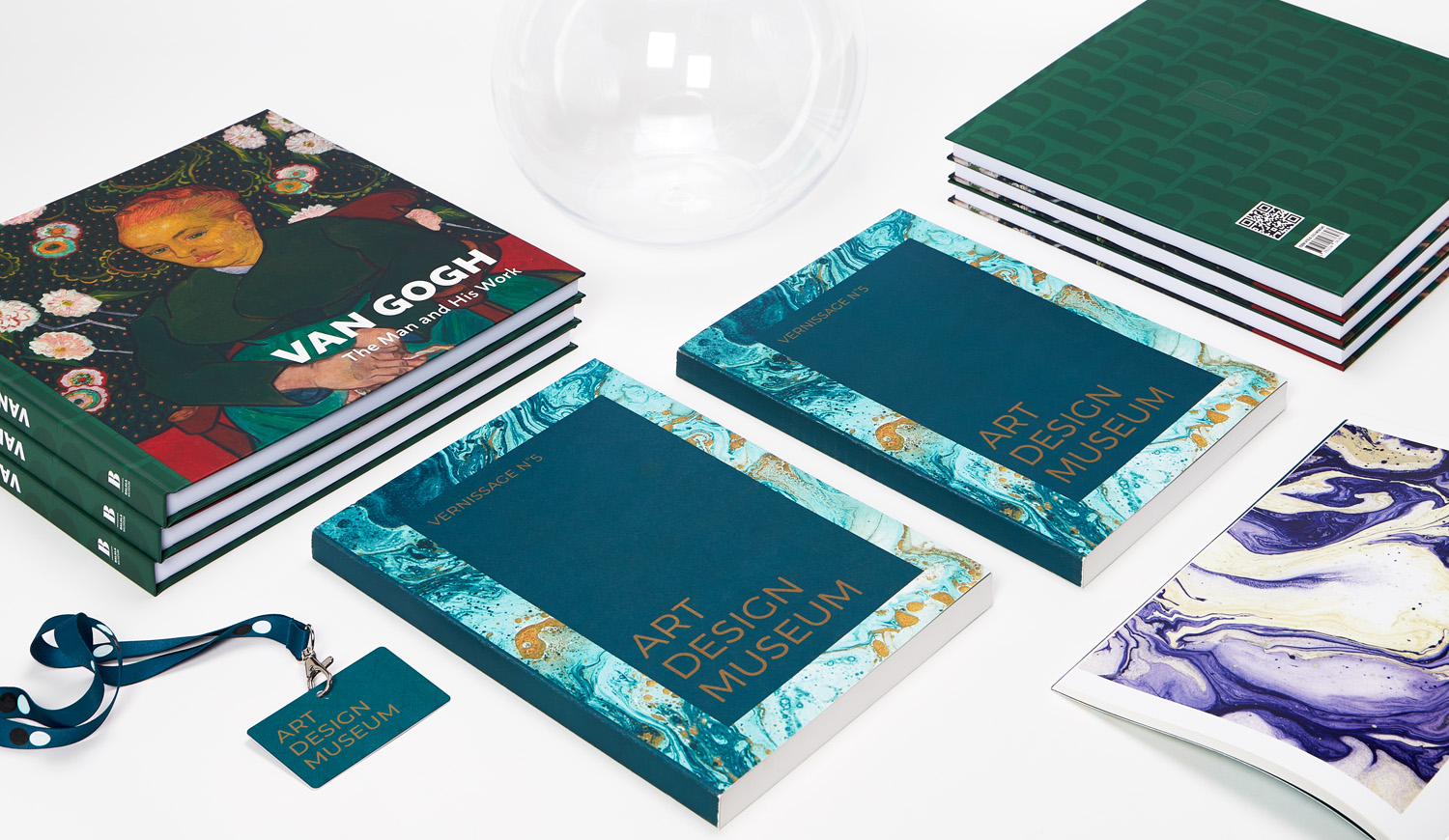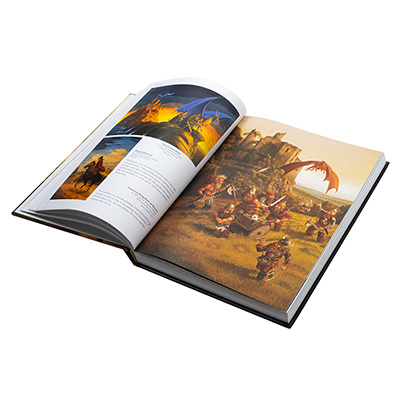Digital or Offset Printing: What's Best for Your art book?
Digital or Offset Printing: What's Best for Your art book?
Blog Article
Discover the Vital Overview to Art Book Printing for Aspiring Artists and Publishers
As an ambitious artist or publisher, understanding the subtleties of art book printing is essential to bringing your vision to life. What are the vital components you should focus on to produce a sensational art book that really represents your work?
Understanding Different Kinds Of Art Books
When you plunge into the globe of art publications, you'll swiftly find that they come in various types, each tailored to various imaginative expressions and audiences. Coffee table books usually display spectacular visuals, best for informal surfing, while monographs dive deep into a specific musician's job, providing context and insights. If you have an interest in details art activities, event brochures supply in-depth paperwork of programs, including essays and critiques.
For training objectives, art manuals and strategy books guide you with numerous tools and designs, making them essential for aspiring musicians. Each format serves its objective, and knowing their distinctions can boost your art book journey.
Choosing the Right Paper and Materials
Picking the best paper and products can greatly affect the overall quality and feeling of your art book. For lively colors and detailed details, decide for a glossy coating or a heavyweight matte paper that boosts aesthetic deepness.
Believe about the weight of the paper, too. Thicker options commonly provide an even more expert look, while lighter papers can reduce printing prices. Do not ignore the binding materials; a strong cover can secure your pages and include in the book's visual.
Finally, consider sustainability. Environment-friendly choices are acquiring appeal and can show your values as a musician. By meticulously choosing your paper and products, you'll assure that your art book not only looks excellent however also feels unique in the hands of your visitors.

Choosing the Best Printing Strategies
When it involves publishing your art book, picking between countered and digital printing can considerably influence your end product. You'll likewise intend to take into consideration just how paper quality impacts the general look and feeling of your art work. Let's discover these crucial printing strategies to discover the best fit for your task.
Balanced Out vs. Digital Printing
While both offset and electronic printing have their advantages, selecting the ideal method for your art book can considerably affect the final product. Balanced out printing provides high-quality images and lively colors, making it ideal for larger print runs. Ultimately, your choice must line up with your artistic vision and distribution strategy, making certain that your art book shows the high quality you desire.
Paper Top Quality Factors To Consider
Selecting the right paper high quality can significantly boost the visual charm and tactile experience of your art book. For prints, a glossy coating can make pictures pop, while a matte coating gives a softer, much more refined appearance.
Following, think of the sustainability of your selection. Eco-friendly choices are coming to be increasingly popular and can interest environmentally-conscious visitors. Request examples to see just how different documents function with your art work, making sure the last product mirrors your vision flawlessly.
Making Sure Shade Accuracy in Your Prints
To achieve sensational prints, you need to concentrate on shade accuracy from the start. You'll want to use shade calibration strategies to verify your monitor and printer remain in sync. In addition, proofing your job before the last print run can assist catch any type of inconsistencies, guaranteeing your art looks just as you envisioned.
Color Calibration Techniques
Assuring color precision in your prints starts with reliable color calibration techniques that aid keep uniformity between your electronic images and last published items. Next, select a shade profile fit for your printing procedure, like CMYK for print products. By continually applying these techniques, you'll improve the total high quality of your art prints and better share your imaginative vision.
Proofing for Precision
While you might think your electronic images await print, proofing is important for attaining shade precision. Prior to dedicating to a full print run, always request a proof from your printer. This allows you to see how shades translate from display to paper. Contrast the evidence with your adjusted screen to detect any type of discrepancies. Focus on saturation, brightness, and tone, as these factors can considerably influence your end product.
If adjustments are needed, communicate plainly with your printer regarding your desired results. Do not be reluctant to request several evidence if required; it's worth the investment to get it. Inevitably, complete proofing assurances that your artwork is represented as you imagined it, maintaining your imaginative honesty throughout the printing process.

Designing Layouts That Enhance Your Art Work
When you make layouts for your art book, it's necessary to consider exactly how each aspect communicates with your artwork. Go for an equilibrium between visuals and text, making sure neither overshadows the other. Use white area strategically; it offers your artwork room to take a breath and attracts attention to its details.
Think about the flow of your book. Prepare photos in a method that overviews the reader's eye, creating a narrative or thematic development. art book. Differ the dimensions and alignments of your artwork to keep the design vibrant and intriguing
Select font styles that enhance your art work without distracting from it. Keep text concise and appropriate, giving context or understanding that enhances the viewer's experience.
Finally, examination various formats. Print samples to see how the layouts translate theoretically, and change as needed. By thoughtfully developing your designs, you'll create a visually appealing art book that reverberates with your audience.
Binding Choices for a Professional Finish
Selecting the right binding choice can greatly influence the total presentation of your art book. You'll desire to think about both aesthetics and resilience when making your option. Popular choices consist of best binding, which provides a sleek look and is excellent for thicker books; saddle sewing, ideal for smaller brochures; and spiral binding, which enables pages to lay flat for very easy watching.
If you're going for a premium feel, instance binding is a superb option, giving a durable cover and a professional appearance (art book). Do not ignore the cover material; options like towel, leather, or a glossy finish can elevate your book's allure
Whatever option website here you choose, make certain it complements your artwork and improves the visitor's experience. Take your time to weigh the benefits and drawbacks of each approach, so your final product reflects the quality of your innovative vision.
Preparing Your Apply For Print Preparedness
To assure your art book is print-ready, you'll require to pay attention to submit preparation. Begin by setting your file size to match your desired print measurements. Usage high-resolution images-- 300 DPI is the standard-- to determine sharp, lively visuals. Convert your data to CMYK mode, as this color room is ideal for printing. Do not forget to consist of bleed locations, usually an extra 0.125 inches around your pages, to avoid any kind of white sides after cutting.
Also, install your font styles or convert text to lays out to avoid any typeface problems. Conserve your job in a PDF format, as this is the most accepted data kind for printers. Confirm your apply for any type of typos or format errors, as changes can be expensive after the fact. Take into consideration developing a proof to assess before the last print run. Following these actions will aid you attain a polished, expert art book.
Frequently Asked Concerns
What Is the Ordinary Expense of Publishing an Art Book?
The standard click for source expense of printing an art book varies, but you can anticipate to pay anywhere from $5 to $20 per copy, depending on elements like dimension, paper high quality, and printing quantity.
How Can I Locate a Reliable Printing Company?
To discover a trustworthy printing business, beginning by investigating on the internet evaluations and asking fellow artists for referrals. Contrast quotes, examine profiles, and interact your needs clearly to assure they understand your vision and top quality expectations.
What Is the Normal Turnaround Time for Printing?
The typical turnaround time for printing differs however usually ranges from one to 4 weeks. Aspects like job intricacy and volume can influence this. Always validate with your chosen printer for particular timelines and assumptions.
Can I Print My Art Book in Limited Quantities?
Yes, you can absolutely print your art book in minimal amounts. Many printing companies provide short-run choices, enabling you to produce simply the number you need, making it less complicated to manage expenses and supply.
What Lawful Considerations Should I Know for My Art Book?
You must take into consideration copyright, licensing contracts, and version launches when creating your art book. Make sure you deserve Read Full Article to make use of all pictures and message, securing on your own from prospective legal concerns later on.
Report this page